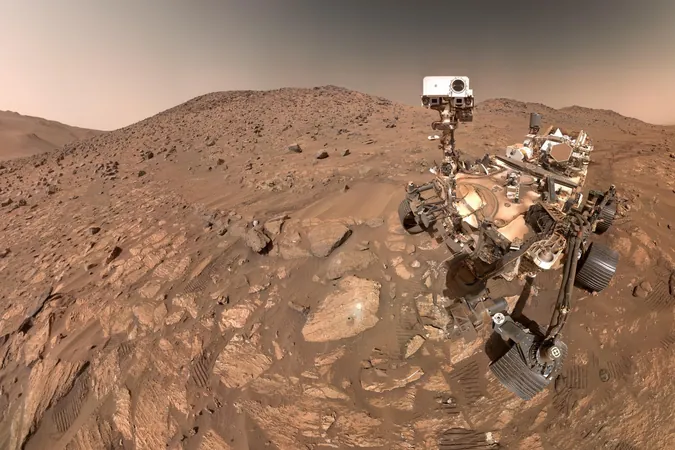
NASA's Mars Rovers Battling Harsh Conditions: Can They Overcome the Odds?
2024-11-12
Author: Ken Lee
Introduction
NASA's Perseverance and Curiosity rovers have been tirelessly exploring Mars for years, navigating various landscapes separated by hundreds of miles. However, recent months have presented significant challenges for both robotic explorers as they strive to complete crucial parts of their missions.
Perseverance's Challenges
Perseverance, currently engaged in its fifth scientific campaign, has faced difficulties reaching the rim of Jezero Crater, an ancient impact site once filled with water. The rover's traverse has become so arduous that it often takes twice the usual time to cover distances on the Martian surface. As it embarks on the mission to determine whether life ever existed on Mars, Perseverance is grappling with steep slopes and precarious terrain that weren't anticipated by its mission team.
Investigation of Jezero Crater
After nearly four years in operation, Perseverance is on a quest to explore the western rim of Jezero Crater, a region believed to have experienced ancient hydrothermal activity. The rover is attempting to ascend approximately 1,000 feet (300 meters) while navigating slopes of up to 23 degrees. Unfortunately, the terrain has posed unforeseen challenges, significantly slowing down its progress. Perseverance recently communicated its struggles via social media platform X, stating, “My journey to the rim of Jezero Crater has been a challenging one. I'm dealing with some steep and slippery terrain. But thanks to my team and autonomous navigation system, I’m avoiding any big hazards as I slowly make my way up.”
Unique Conditions
The investigation revealed that the crater's rim is composed of loose dust and sand, capped with a brittle crust, making the surface more slippery than expected. In fact, there was an instance where Perseverance could only complete around 20% of its planned route in one day! According to Camden Miller, a route planner at NASA's Jet Propulsion Laboratory, this is a unique situation: “For every two steps forward Perseverance takes, we were taking at least one step back.”
Strategies for Ascent
To tackle these formidable conditions, the mission team has devised strategies to ease the rover's ascent. One approach involved having Perseverance climb in reverse, which allowed its suspension system to maintain better traction. The team decided to direct the rover toward the northern edge of the crater rim, where larger rocks may enable better footing, thus reducing slippage.
Curiosity's Situation
Meanwhile, Curiosity, Perseverance's predecessor, is also encountering obstacles several hundred miles away. The rover was forced to halt its move toward its intended destination after exceeding its suspension limits, leaving one wheel in a trough and another teetering on a rock in the Gediz Vallis, a channel near Mount Sharp that may have once hosted liquid water.
Tactics for Curiosity
Curiosity's crew shifted tactics, relying on remote sensing to gather data about the surrounding area while they strategized a way for the rover to maneuver out of its precarious position. The mission team aims to gather insights about how Gediz Vallis formed—whether through an ancient river, wind action, or dry avalanches—providing a deeper understanding of Mars's complex geological history and hinting at the planet's ancient water phases.
Conclusion
As the rovers continue to grapple with the harsh Martian environment, they remain steadfast soldiers in the search for signs of past life on the Red Planet. Each challenge presents opportunities for new discoveries, revealing not just the history of Mars but also the resilience of human ingenuity. Will they succeed in their daunting quests, or will the unforgiving Martian landscape thwart their efforts? Only time will tell!
 Brasil (PT)
Brasil (PT)
 Canada (EN)
Canada (EN)
 Chile (ES)
Chile (ES)
 España (ES)
España (ES)
 France (FR)
France (FR)
 Hong Kong (EN)
Hong Kong (EN)
 Italia (IT)
Italia (IT)
 日本 (JA)
日本 (JA)
 Magyarország (HU)
Magyarország (HU)
 Norge (NO)
Norge (NO)
 Polska (PL)
Polska (PL)
 Schweiz (DE)
Schweiz (DE)
 Singapore (EN)
Singapore (EN)
 Sverige (SV)
Sverige (SV)
 Suomi (FI)
Suomi (FI)
 Türkiye (TR)
Türkiye (TR)